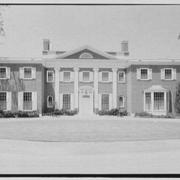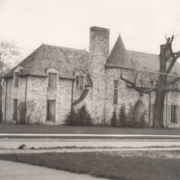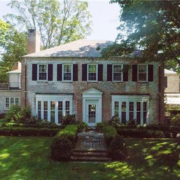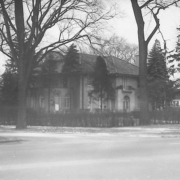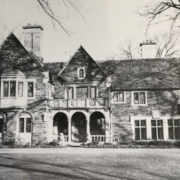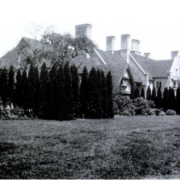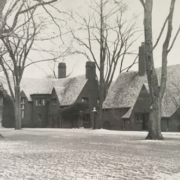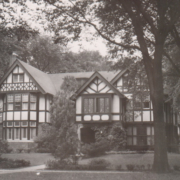Historical Architecture of Grosse Pointe – The Lost Estates – Part 2
Last week we featured the Whitcomb Estate, a fascinating story that began life as the Theodore Parsons Hall estate and now exists as the Cracchiolo residence.
Given the extensive changes to Lakeshore, and its estates over the years we decided to continue with our exploration of some of these exceptional properties. This week, in part two, we investigate the large estate(s) close to the former Whitcomb residence – the bygone Roy Chappin, William P. Stevens, and Richard Webber properties. All of which have been razed over time, and have been replaced in one-way shape or form.
So lets start with 431 Lakeshore. Built in 1914 it was reportedly designed, by leading Detroit architectural firm Smith Hinchman and Grylls for William P. Stevens. It was a magnificent Georgian Revival home constructed from brick. The Georgian approach was extremely sought after during this era, particularly in the larger estates that were being built in Grosse Pointe Farms.
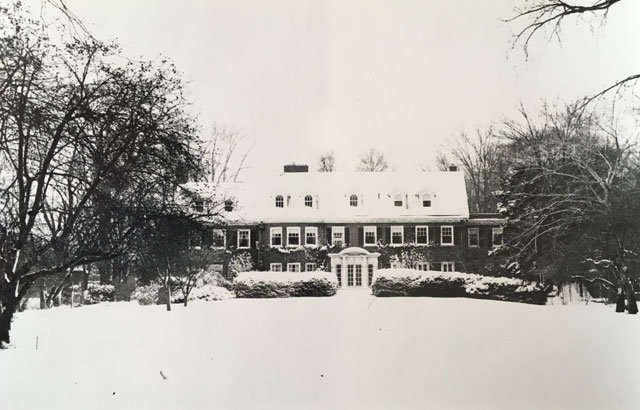
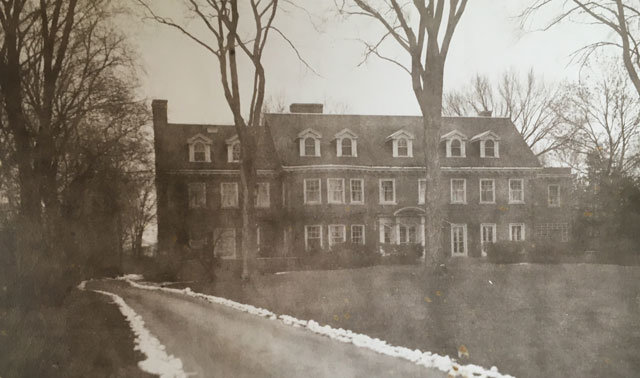
Mr. Stevens worked with his father in real estate development, and spent a lifetime developing Highland Park and other industrial centers. He also served a term on the old Detroit Board of Estimates, and was a councilman at Grosse Pointe Farms for several years.
The house was demolished in 1984 due to structural problems, and ongoing maintenance issues. Source: Information held at the Grosse Pointe Historical Society.
In 1925 the Detroit firm of J. Martin Brown, Robert O. Derrick and Martin Preston completed 437 Lakeshore for Richard H. Webber, nephew of Joseph L. Hudson (Richard H. Webber became head of J.L. Hudson’s upon his uncle’s death).
It was an impressive 5,641 sq ft home, designed in a traditional Tudor style (popular throughout the Grosse Pointe communities) constructed of stone, with limestone detailing around the windows. The three-story home featured superb detailing throughout that you would expect to find in a house of this grandeur. The first floor contained several rooms with natural fireplaces – the morning room, living room, and the library. The second floor included a master suite, complete with sitting room, along with four additional bedrooms and three bedrooms for maids. The third floor featured two bedrooms, two further bedrooms for maids along with a ballroom with a natural fireplace. Sadly we were unable to find any interior photo’s of this stunning residence.

437 Lakeshore – Courtesy of Detroityes.com

It was demolished in 1984, and the property was redeveloped, along with the former Chapin residence, to create the Windemere Place Condominium’s.
Robert O. Derrick, was one of Grosse Pointe’s most noted architects. In 1921 he held the title of Vice-President at the firm of Brown, Derrick and Preston, before going on to complete many solo projects throughout the community. You can read the full story about Robert O. Derrick by clicking here.
In 1927 Roy Chapin, president of the Hudson Motor Car Company, commissioned 447 Lakeshore – Windemere Place – designed by nationally known New York architect John Russell Pope. Chapin’s new home took the form of a stately Georgian Mansion, which exuded classic 18th century Georgian architecture. It is believed, based on research by the Grosse Pointe Historical Society, that Mrs. Chapin so greatly admired the John S. Newberry House she wanted it to serve as a model for her new home. However, Pope selected to create a more formal approach to the design, adding several trademarks of the popular Georgian architectural approach – columns, pilasters and the central triangular pediment above the entrance. Images Courtesy of the Library of Congress.


The Chapin house was one that encompassed all the requisites of good taste and elegance. Pope created a property bursting with traditionally craftsmanship, of dignity rather than splendor. The interior of the property is comfortable as well as handsome.
The gardens were also in keeping with the grand work of the interior. Originally laid out by Bryant Fleming the 600-year-old yew hedges were imported from England. However, the focal point of the garden was an authentic 18th century doorway that Bryant decided to use as a wall fountain, water trickled down over rocks where the door had formerly been.


Roy Chapin died in 1936. In 1956, following the death of Mrs. Chapin, the home was sold, and purchased by Henry Ford II. It was subsequently demolished in 1983. The land, along with the Webber estate, was developed and is now the location of the Windemere Place Condominium’s.
Three stunning homes, owned by three prominent owners, and created by three noted architects. They may be lost in time, but will not be forgotten.
Written by Katie Doelle
Copyright © 2018 Katie Doelle

